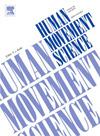Effects of hand muscle function and dominance on intra-muscle synergies
Abstract
The goal of the study was to explore the effects of hand dominance and muscle function (prime mover vs. supporting muscle) on recently discovered intra-muscle synergies as potential windows into their neural origin. Healthy right-handed subjects performed accurate cyclical force production tasks while pressing with the middle phalanges and distal phalanges of the fingers of the dominant and non-dominant hand. Surface electromyography was used to identify individual motor unit action potentials in two muscles, flexor digitorum superficialis (FDS) and extensor digitorum communis (EDC). Stable motor unit groups (MU-modes) were defined in each muscle and in both muscles together. The composition of the MU-modes allowed linking them to the reciprocal and co-activation command. Force-stabilizing synergies were quantified in each hand and during force production at both sites using the framework of the uncontrolled manifold hypothesis. Force-stabilizing synergies were seen in the spaces of MU-modes from FDS and EDC separately, but not of MU-modes defined for both muscles together. Synergy indices were similar for both hands and both sites of force application. In contrast, force-stabilizing synergies in the space of finger forces were present in the non-dominant hand and absent in the dominant hand. The data suggest existence of distributed mechanisms of synergic control. Finger force synergies are likely to reflect functioning of subcortical loops involving the basal ganglia and cerebellum, while MU-mode synergies are likely to reflect spinal circuitry. Studies of both force-based and motor-unit-based synergies may be clinically valuable for distinguishing effects of spinal and supraspinal disorders.

 求助内容:
求助内容: 应助结果提醒方式:
应助结果提醒方式:


